It’s a warm, midsummer night, and sweat slides down my back as I follow ecologist Shaeleigh Read along the narrow trail through the Brook Waimārama Sanctuary. An owl calls overhead — an inquisitive ru-ru, ru-ru — but my eyes remain fixed on the undergrowth. We’re not here for the birds.
As I glance up-hill, the beam of my head-torch lands on a large reptile. I can just make out its mottled green and grey scales, which camouflage perfectly against the forest floor. A narrow row of spines extends along its back, leading to a stubby face with large, dark eyes. If I didn’t know better, I’d think it was an iguana.
But there aren’t any iguanas in New Zealand. The animal sitting placidly before me in the leaf litter is something far more special. It’s a tuatara, one of the world’s most ancient reptiles.
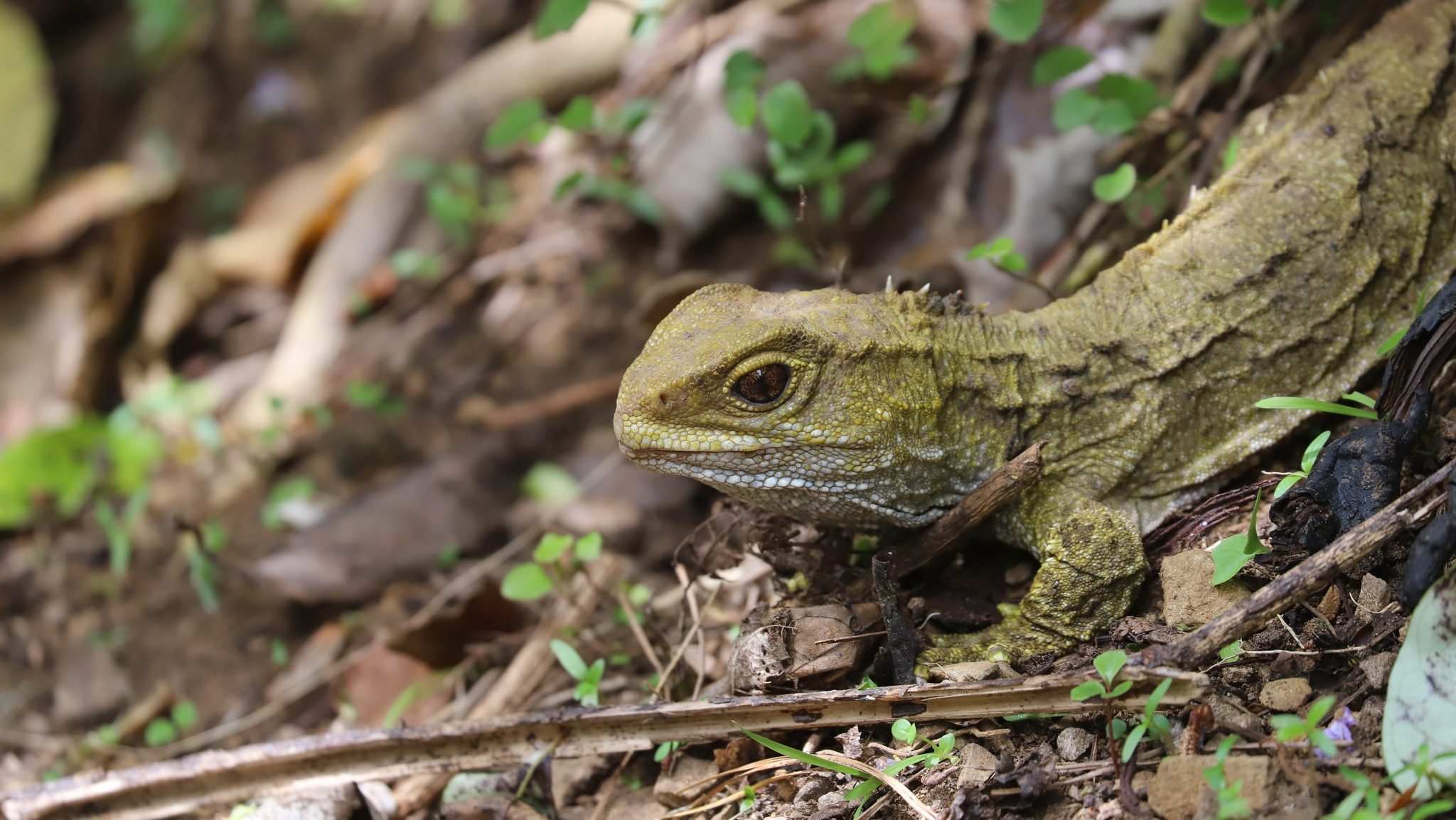
Meet the Tuatara
Let’s get one thing straight: Tuatara are not lizards.
They look like lizards, feel like lizards, behave like lizards, but the tuatara is something else entirely. This species is the sole surviving member of the order Rhynchocephalia, a type of reptile that was found across the globe during the Mesozoic, living alongside the dinosaurs.
The rest of the Rhynchocephalia crew (which means beak-head) declined and eventually became extinct about 60 million years ago. Except the tuatara. Paleontologists suspect that an explosion in mammal diversity — following the mass extinction event that doomed the dinosaurs — presented challenges for the tuatara’s ancient relatives, who now had to compete with mammals for resources. And while the tuatara is related to snakes and lizards, the two reptilian groups diverged about 250 million years ago. That’s a long time in evolutionary terms. For context, humans are more closely related to kangaroos than tuatara are to lizards.
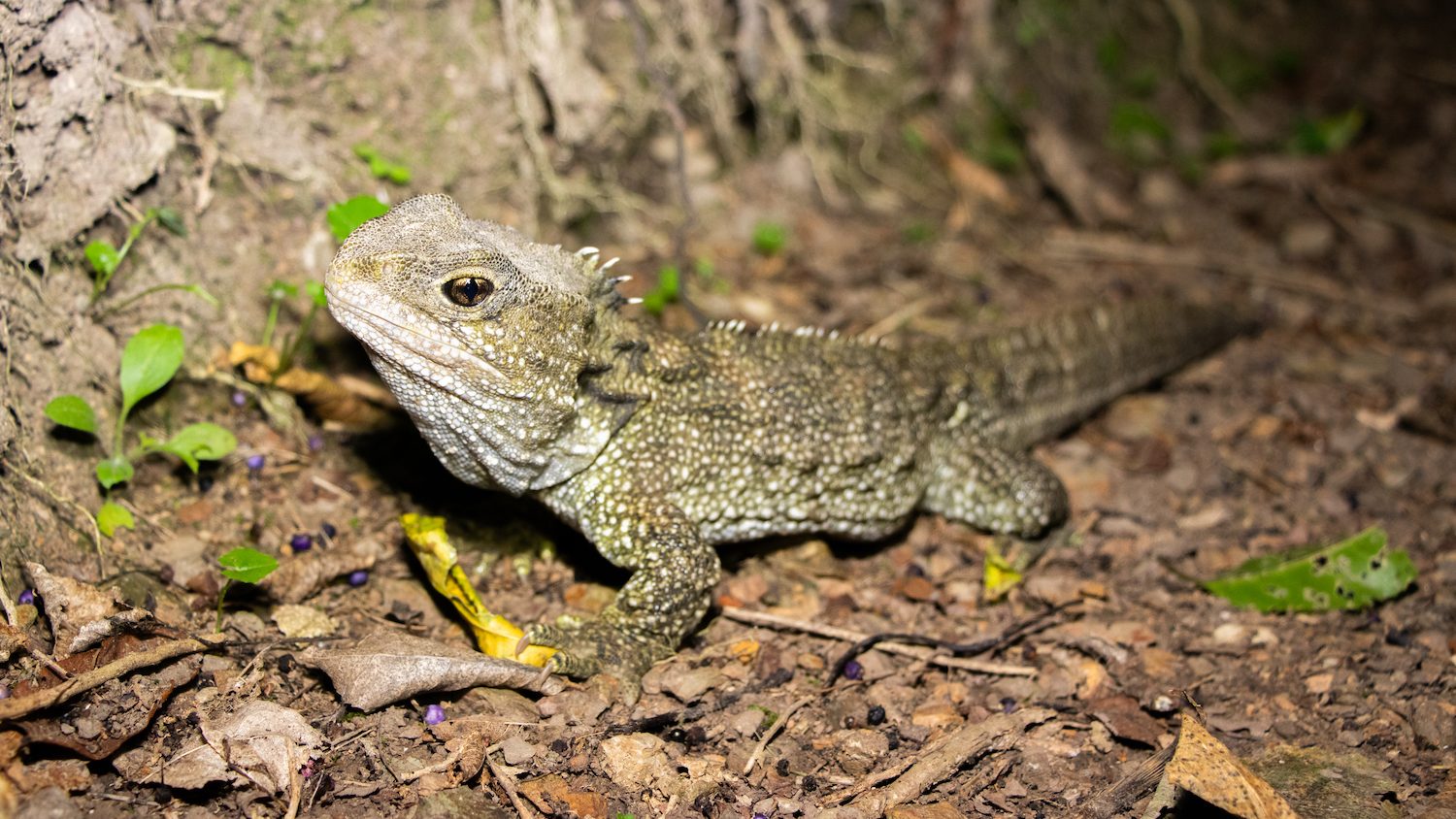
Tuatara are found only in New Zealand, where they’re the country’s largest endemic reptile. Fossils evidence indicates they were once widespread across both the North and South Island. But like many of the country’s endemic ground-nesting birds, they started to decline soon after humans arrived about 800 years ago. Kiore, or Polynesian rats, arrived with the first Māori. Rats consume tuatara eggs, prey on small hatchlings, and also compete with adult tuatara for food.
Like other long-lived reptiles, tuatara have a very slow reproductive rate. It takes them about 14 years to reach sexual maturity, at which point they breed every 2 to 5 years. Females lay a clutch of between 6 to 10 eggs, which take up to 16 months to hatch.
This slow-and-steady strategy works just fine in a land absent of mammalian predators. But once rats arrived in New Zealand, the tuatara just couldn’t keep up with this new type of predation pressure they have not evolved with. By the time European settlers arrived in the late 1700s, tuatara had disappeared from the mainland and survived only a handful of rat-free islands.
Last year, conservationists reintroduced 56 tuatara into the Brook Waimārama Sanctuary, which was only the second-ever release of tuatara into a fenced sanctuary on the South Island. Six months later, ecologists are monitoring the tuatara to make sure they’re thriving in their new home. Which is how I found myself stumbling around a steep hillside in the dark on a humid summer’s night, attempting to sneak up on this incredible animal.

Night of the Reptiles
We set out at dusk, passing through the high fence that surrounds the sanctuary and then through a second, mouse-proof enclosure. I have no idea what to expect, so I keep my eyes glued to the hillside on my left, searching for any sign of a tuatara.
“That’s A07, she’s my favorite,” says Shaeleigh Read, gesturing up the hill to a burrow entrance marked with a red triangle. “We’ll see if she’s out later.” A master’s student at the University of Otago, Read is monitoring the reptiles during the critical post-translocation period, as they settle into their new home.
A few months after their reintroduction, Read attempted to catch each of the tuatara to assess their body condition. “We don’t have to use traps,” she explains. Instead, she sneaks up on the reptiles and gently places her hand over them. “Then you slide your other hand underneath and pick them up,” she says. “They love body warmth, and if they start to wiggle we just place another hand over top of them and they calm down.”
With the reptiles in hand, Read gathers data on their length, weight, overall condition, and parasite load. She can compare these data with measurements taken just prior to the animal’s release to understand how their health is faring in their new environment. “All of our animals came from captive populations, so they’re having to learn how to source their own food,” she explains. Tuatara feed on small invertebrates, like slugs and worms, as well as bird chicks, small reptiles, and giant, flightless crickets known as wētā.
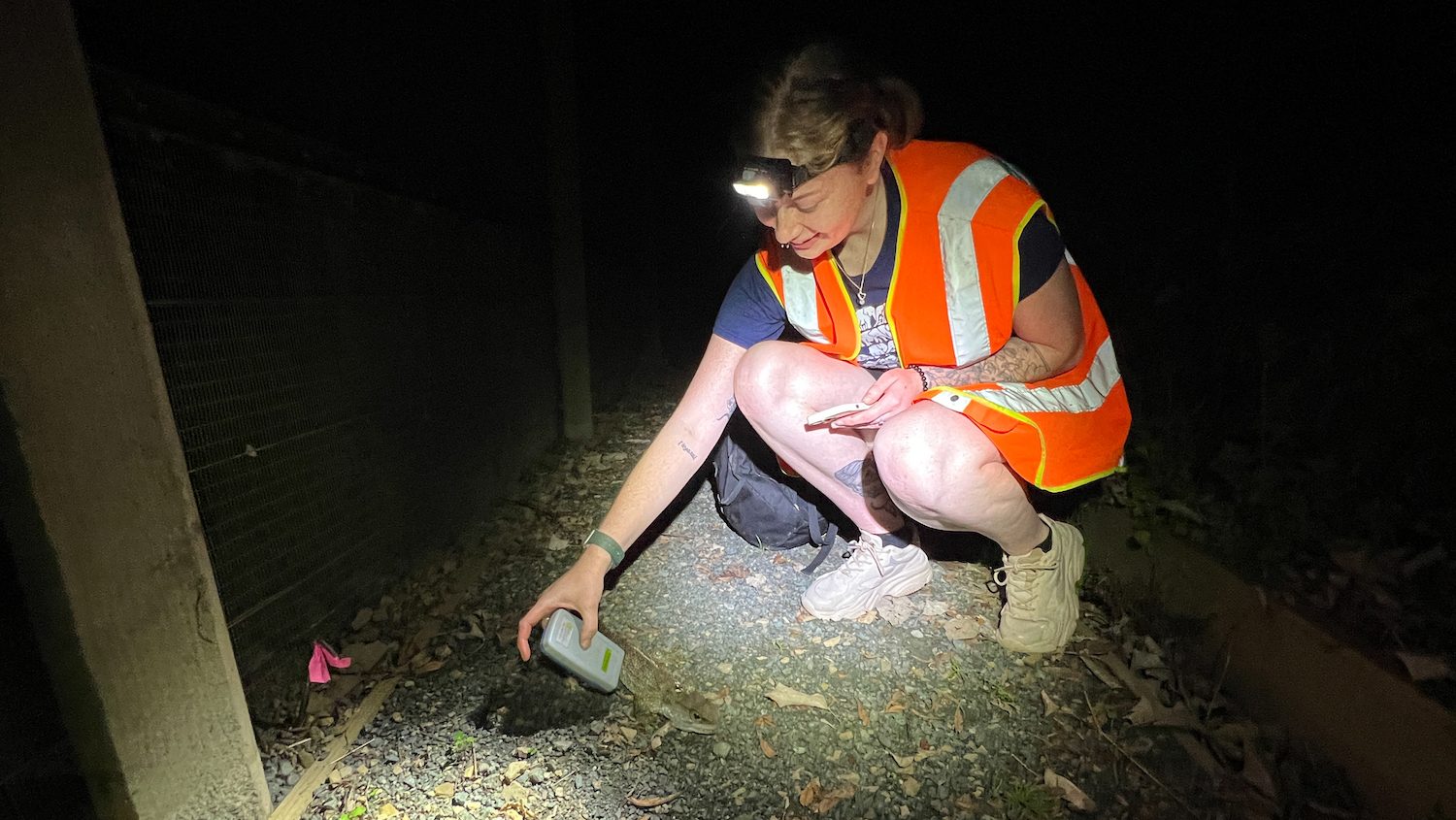
Tonight, we’re gathering dispersal data. When the tuatara were first brought to the sanctuary, each animal was released into a hand-dug burrow on the hillside, complete with a numbered marker. Read wants to understand how far the animals have dispersed throughout the sanctuary: Do they stay in their release burrows, or choose new ones? Do they congregate in certain habitats? How far are they moving?
Our mission tonight is to find as many animals as we can, mark their GPS locations (and the location of the closest burrow) and then scan the animal’s unique microchip number.
It doesn’t take long for us to find our first tuatara. It’s sitting just outside the next burrow, gazing at us indifferently as we approach. My eyes gravitate toward its forehead, searching for the parietal eye. Tuatara have a bundle of photo-receptive cells in the center of their forehead, visible only when the animals are young. “We don’t know it’s true function,” says Read, “but scientists suspect that it plays a role in regulating temperature and circadian rhythms.” A similar structure is found in many species of lizard, frog, and fish, including sharks. Unfortunately, this animal is fully grown, so there’s nothing to see except a faint dimple at the base of its head crest.
And now the challenging part: The microchip reader only works when it’s an inch or two away from the animal, so Read has to carefully creep up on the tuatara and try to scan its back, all without startling them. Thankfully, the tuatara seem far less skittish than the lizards I’m used to in Australia. Some try to wiggle away, but they only move a meter or so before stopping. Others just sit there.
This one is compliant, holding its ground as Read climbs up the hill towards it. Moving slowly, she holds the reader close to the animals back, and it beeps faintly. Read smiles; her suspicions confirmed. This animal is one of her regulars, showing up in the same burrow week after week. She says that most of the tuatara haven’t moved far from their original release burrows, which is a good sign that they’re happy.
“This information will be really useful to navigate future translocations,” says Read. Details like how close the burrows are spaced, what habitat they’re placed in, and how many burrows the animals require will help ensure that future tuatara reintroductions are successful.
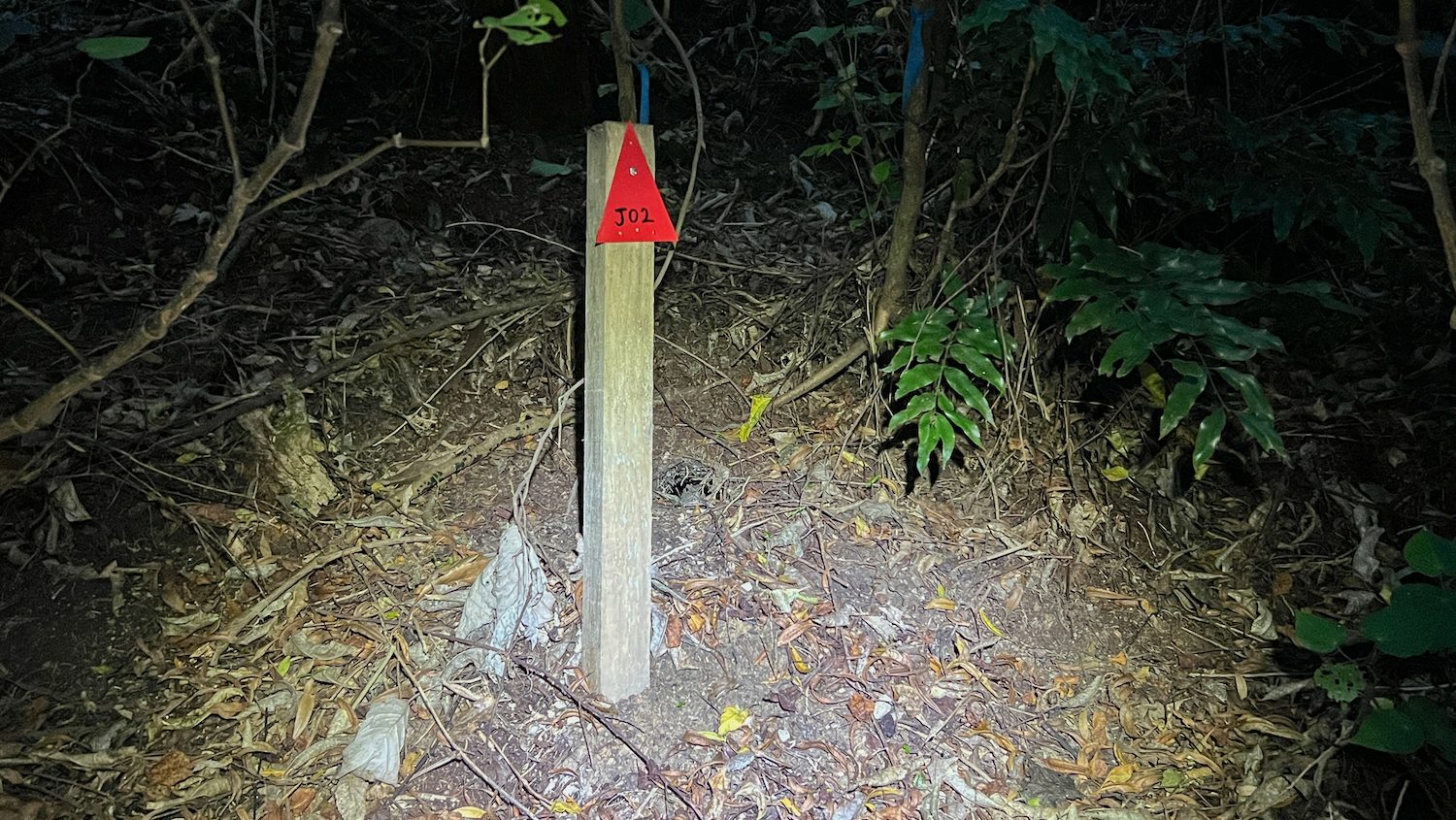
As we ascend the slope, we find another tuatara laying across the narrow track. It blinks at us, refusing to move. Read scans its microchip, and then one by one we step around the animal and continue our search.
Nelson City is visible in the distance, a smattering of white lights twinkling from down the valley. I can hear the faint sound of music emanating from the campsite at the base of the hill, just outside the sanctuary entrance. “The people camping down there have no idea that they are neighbors with a reptile whose ancestors were around before the dinosaurs,” says Read, smiling.
It takes us a few hours to survey the lower slopes. Now it’s time to head to the top of the hill and look for the juveniles. Read explains that they released three different age cohorts — babies, juveniles, and adults — with each group going into a different section of the hillside. When I ask why they were split up, she reminds me that tuatara are occasionally cannibalistic, and so the sanctuary ecologists didn’t want to run the risk of a grown adult snacking on a baby.
It will take a while for the youngest animals to catch up; tuatara have one of the slowest growth rates of any reptile, taking about 35 years to reach their full adult size. Scientists suspect that tuatara can live for up to 80 years in the wild, and possibly even longer.
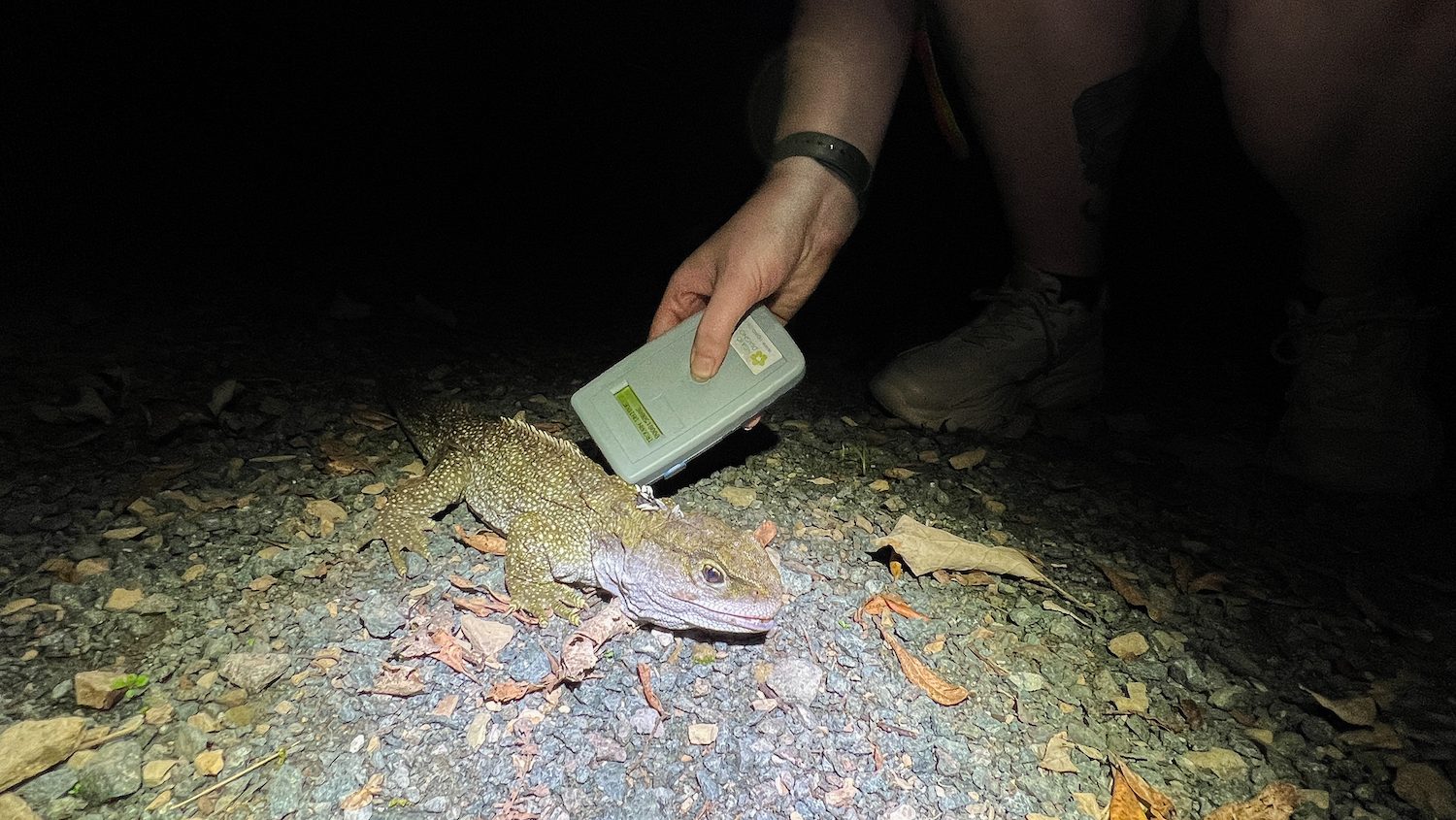
Restoring the Beech Forests of Brook Waimārama
Located in the hills behind Nelson, the Brook Waimārama Sanctuary is the largest fenced haven on the South Island. Its 14.4 kilometer-long predator-proof fence protects nearly 7 square kilometers of mature beech forest.
Along with tuatara, the sanctuary is home to a reintroduced population of orange-fronted parakeet (kākāriki karaka) as well as the powelliphanta, a large, carnivorous land snail that slurps up earthworms like spaghetti. Ecologists also recently reintroduced little spotted kiwi, which hasn’t been present on the South Island for more than a century.
Maintaining the fence isn’t without its challenges. Every few years, the beech forests seed en-masse, creating a surplus of food for hungry rodents. “During mast years, we get tidal wave after tidal wave of rodents hitting the fence,” says sanctuary ecologist Robert Schadewinkel. Extreme weather poses a threat, too. A few months after I visited the sanctuary, catastrophic floods ripped open a 6-meter-wide gap in the fence.
A network of dedicated volunteers helps check and maintain the fence. And tracking tunnels — tunnels lined with tracking cards, with an ink pad in the middle — are set out throughout the sanctuary to monitor for any potential incursions. And invading rodents (or other feral species) will crawl through the tunnel and leave footprints behind, alerting ecologists to the danger.
Extreme vigilance is necessary; one incursion could be enough to jeopardize the entire sanctuary.
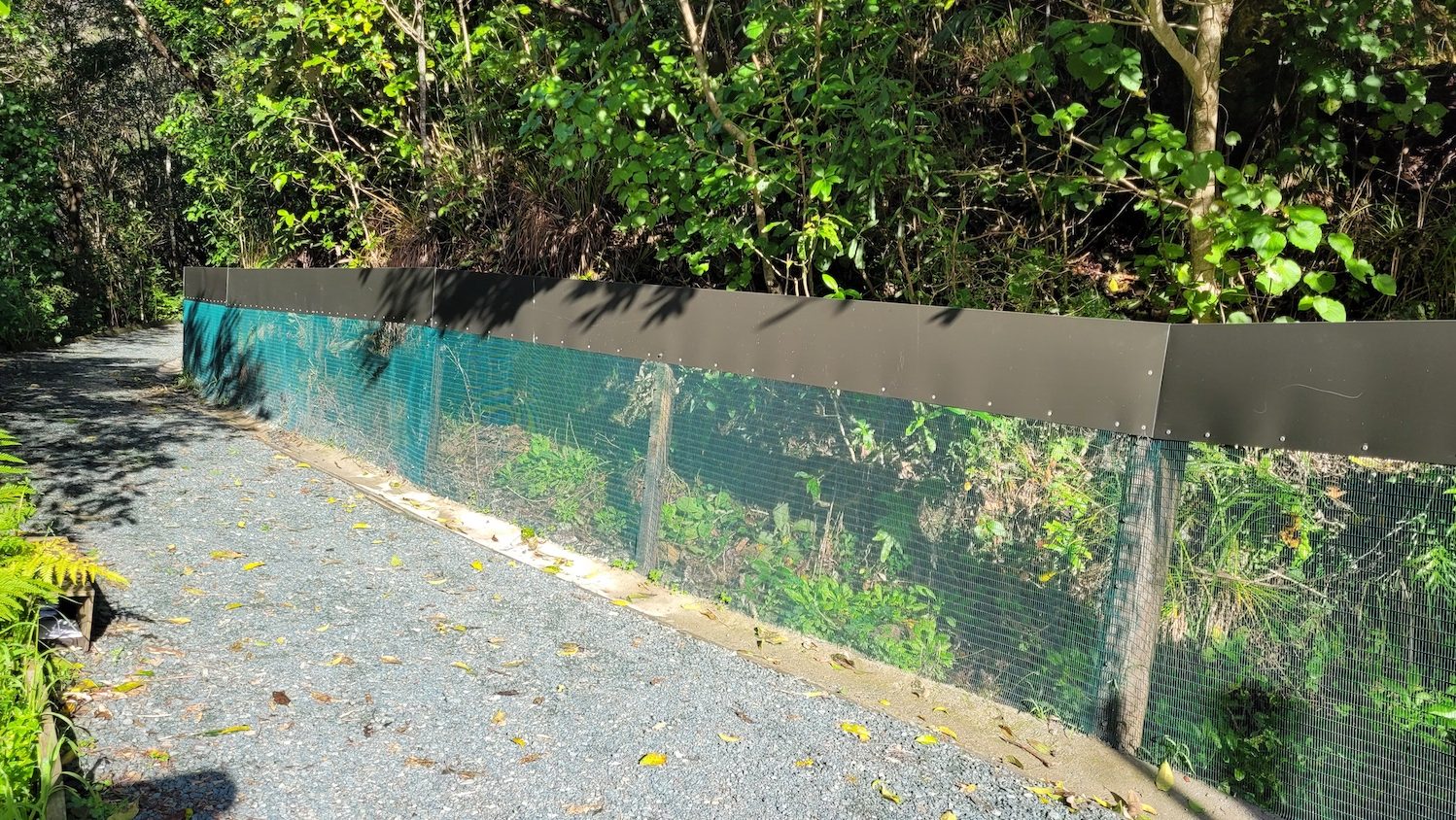
It’s nearly midnight by the time we finish our survey. I’m soaked with sweat, and my legs are tired from trekking across the sanctuary’s steep slopes. And yet I couldn’t be happier. I’ve spent the night in the company of one of the world’s most spectacular reptiles, and the dedicated scientists and volunteers working to help tuatara thrive for the long-term.
Just before Read and I reach the fence gate, we find a large tuatara sprawled across the path. This one is gorgeous, with a deep olive green back specked heavily with white. It cocks his head at us, mouth slightly agape. One by one we scooch past, leaving it to continue foraging. With any luck, this incredible reptile will trundle through the sanctuary grounds for decades to come.
The Brook Waimārama Sanctuary is aligned to the Kotahitanga mō te Taiao Alliance, a collaboration of iwi (Māori indigenous tribes), non-profits, and governments at the top of New Zealand’s South Island. It aims to restore and enhance nature across 3.4 million hectares of land and sea. The Nature Conservancy supports the alliance by providing facilitation, funding, science, and global expertise.
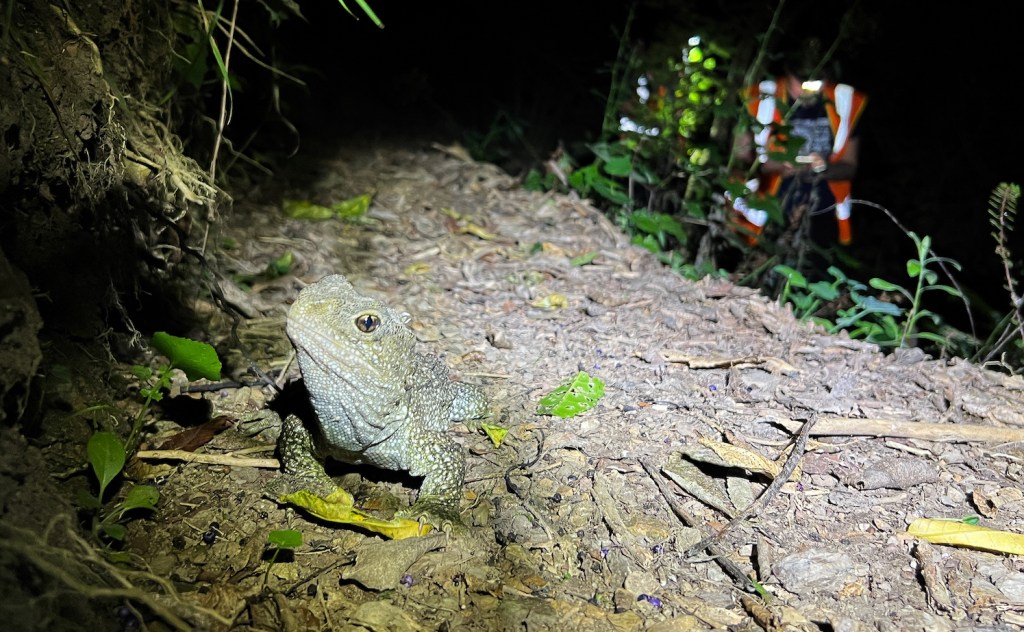



Very interesting article. I would love to see this place.